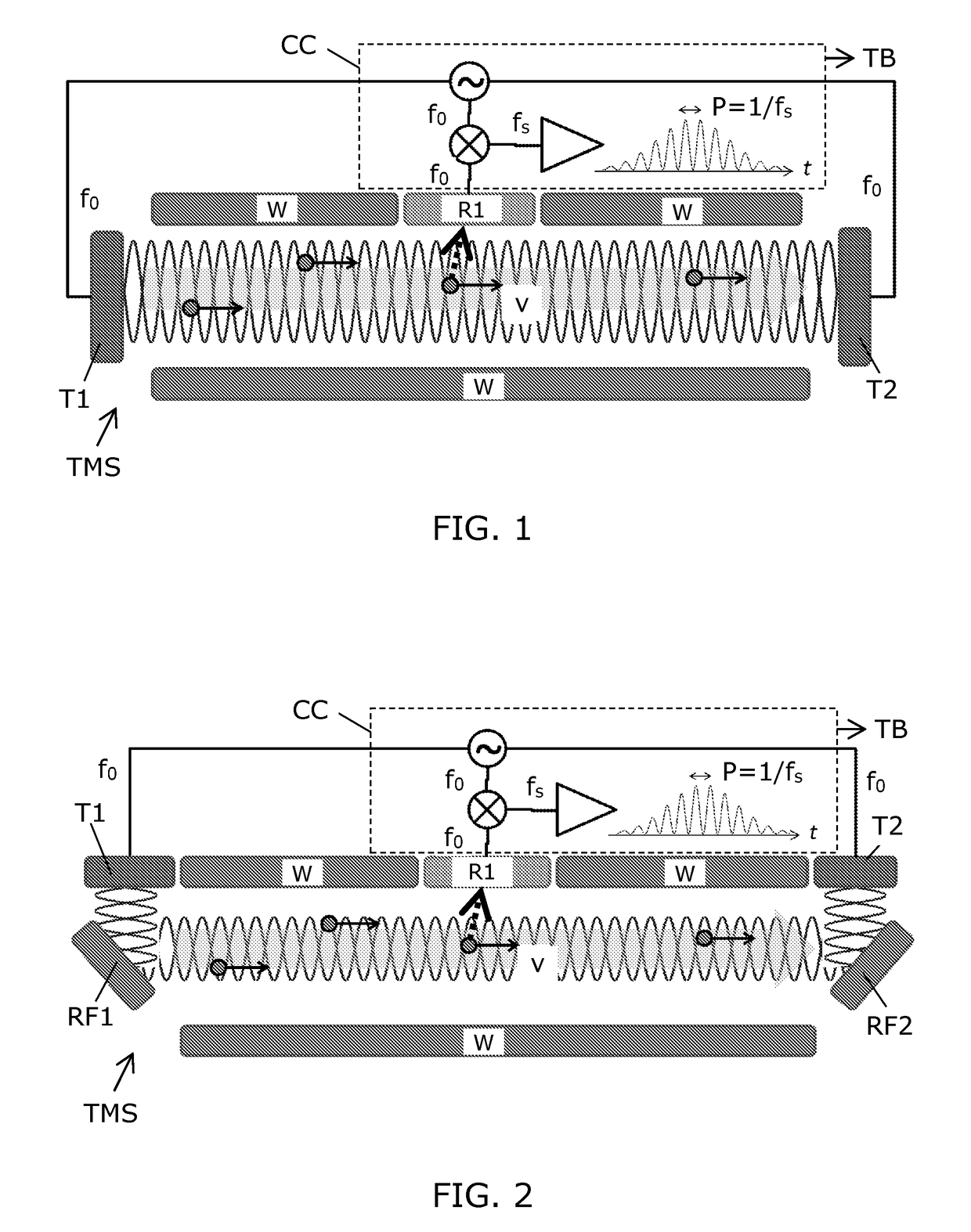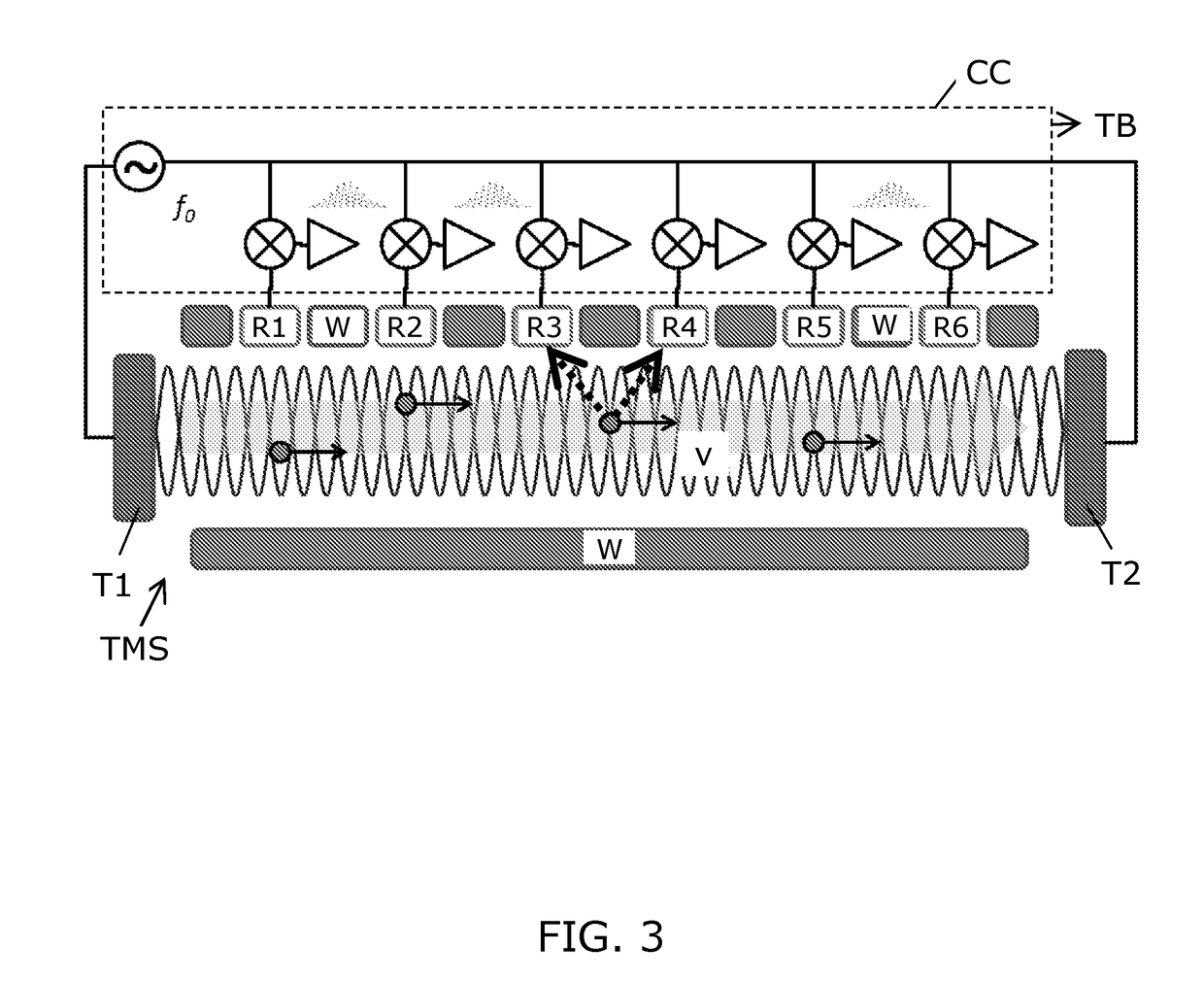Turbidity sensor based on ultrasound measurements
a technology of turbidity sensor and ultrasound, which is applied in the field of turbidity sensors, can solve the problems of not being able to function as a permanent part, not being able to accurately detect the response signal, and not being able to accurately measure the turbidity, so as to achieve simple and low cost, still robust and reliable measurement
- Summary
- Abstract
- Description
- Claims
- Application Information
AI Technical Summary
Benefits of technology
Problems solved by technology
Method used
Image
Examples
Embodiment Construction
[0083]FIG. 1 illustrates a sketch of a turbidity measurement device embodiment with a flow tube with walls W, where two transducers T1, T2 are arranged in the flow tube and serve as end sections for the turbidity measurement section TMS between which two ultrasonic standing waves are generated. The dark circles indicate particles flowing along the fluid in the flow tube with flow rate v. A receiver transducer R1 is arranged at the wall W of the flow tube at a central position between the two transducers T1, T2. For one particle an ultrasonic response to the ultrasonic standing wave is indicated with a dashed arrow towards the receiver transducer R1 which then captures the ultrasonic response from the particle. With an ultrasonic standing wave with frequency f0, the expected frequency fs of high intensity scattering of a particle in a fluid with flow rate v is: fs=(v / c)f0, where c is the speed of the ultrasonic wave in the fluid. Thus, a high intensity response from particle scatteri...
PUM
| Property | Measurement | Unit |
|---|---|---|
| size | aaaaa | aaaaa |
| distance | aaaaa | aaaaa |
| frequency | aaaaa | aaaaa |
Abstract
Description
Claims
Application Information
 Login to View More
Login to View More - R&D
- Intellectual Property
- Life Sciences
- Materials
- Tech Scout
- Unparalleled Data Quality
- Higher Quality Content
- 60% Fewer Hallucinations
Browse by: Latest US Patents, China's latest patents, Technical Efficacy Thesaurus, Application Domain, Technology Topic, Popular Technical Reports.
© 2025 PatSnap. All rights reserved.Legal|Privacy policy|Modern Slavery Act Transparency Statement|Sitemap|About US| Contact US: help@patsnap.com



